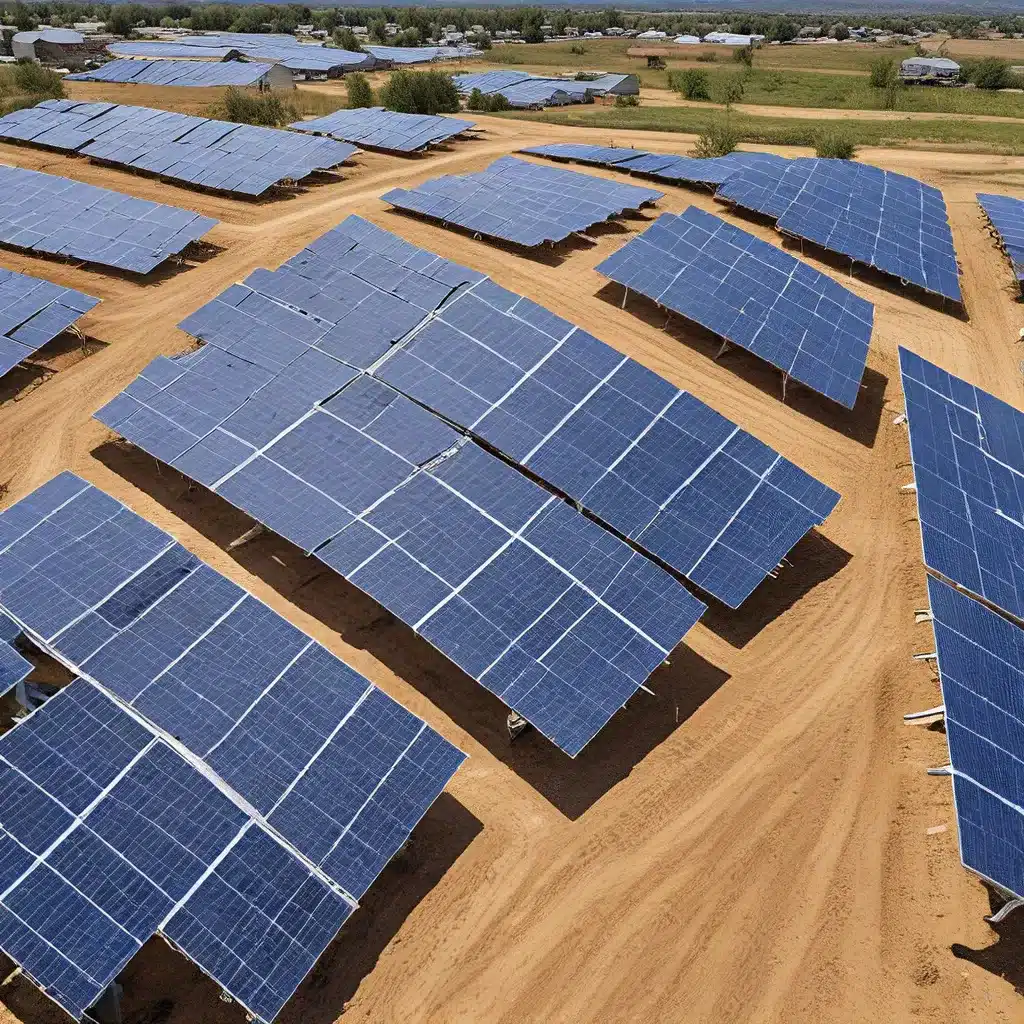
Unlocking the Power of the Sun for All
Picture this: You’re a renter living in an apartment without the ability to install solar panels on your roof. Or maybe your home’s electrical system just can’t handle the requirements of going solar. Sounds like a bummer, right? Well, fear not, my friend, because community solar is here to save the day!
Community solar is a game-changer when it comes to accessing the benefits of renewable energy. It’s a solar project or program where multiple customers, like individuals, businesses, and nonprofits, can tap into the power of the sun, even if they can’t install panels on their own roofs. And the best part? You typically get to see a nice little credit on your monthly electricity bill for your share of the energy generated.
According to the Department of Energy, community solar customers “subscribe to or in some cases own a portion of the energy generated by a solar array” located off-site. The utility then pays the community solar provider for the electricity, and each subscriber receives a credit on their bill for their share of the generated power. Talk about a win-win!
Spreading the Solar Love
One of the coolest things about community solar is that it’s rapidly growing across the country. The National Renewable Energy Laboratory has been keeping track of all the community solar installations, and the numbers are pretty impressive. In fact, there’s at least one community solar project in 43 states and the District of Columbia, with 22 of those states and D.C. having passed legislation to encourage or even mandate these programs.
But it’s not just about the numbers – community solar is making a real difference in people’s lives. For starters, it’s a game-changer for those who can’t host solar panels on their own roofs, whether it’s because they’re renters, their roof isn’t suitable, or the upfront costs are just too high. Nearly 50% of households and businesses fall into this category, according to the Department of Energy. Community solar gives them a way to access the benefits of solar power without having to jump through all those hoops.
And it’s not just about individual households – community solar can also benefit entire communities. According to the Rhode Island Office of Energy Efficiency & Renewable Energy, these programs can lead to “community wealth building and local job creation.” That’s the kind of community-building we can all get behind, right?
Shining a Light on the Benefits
Now, I know what you’re thinking – “That’s all well and good, but what’s in it for me?” Well, my friends, let me tell you – the benefits of community solar are pretty darn impressive.
First and foremost, lower electricity costs. In most places, solar power is already less expensive than fossil-generated electricity, so when you subscribe to a community solar project, you can typically save some cash on your monthly bills. And who doesn’t love saving money, am I right?
But the benefits don’t stop there. Community solar can also boost the resilience of your local power grid during blackouts or extreme weather events. When the sun is shining, those community solar panels are still cranking out electricity, helping to keep the lights on even when the traditional grid is struggling.
And let’s not forget about the environmental impact. By tapping into renewable solar energy, community solar subscribers are reducing their carbon footprint and helping to fight climate change. It’s a simple way to do your part for the planet while also saving some money on your electric bill. Talk about a win-win-win!
Overcoming the Challenges
Of course, no new technology or program is without its challenges, and community solar is no exception. One of the biggest hurdles is ensuring that consumer protections are in place to guarantee that subscribers receive the full benefits they’re promised.
According to the Department of Energy, some best practices for consumer protections include clear and transparent contracts, ensuring subscribers achieve energy savings, and incorporating other key safeguards. It’s crucial that community solar programs are designed with the consumer’s best interests in mind.
Another challenge is the availability of community solar projects, especially in areas without enabling legislation. The Department of Energy notes that in states without such laws, non-regulated utilities or municipal utilities may develop their own community solar programs. But the availability and subscription options can vary widely depending on your location.
The Future of Community Solar
Despite these challenges, the future of community solar looks bright (pun intended). The Department of Energy’s Solar Energy Technologies Office is leading the charge with the National Community Solar Partnership, a coalition of stakeholders working to expand affordable community solar access to every American household by 2025. That’s a pretty ambitious goal, but with the right policies, incentives, and technological advancements, it’s definitely achievable.
And you know what they say – the more, the merrier. As more people gain access to community solar, the benefits will only continue to compound. Imagine entire neighborhoods or even entire cities tapping into the power of the sun together, all while saving money and reducing their environmental impact. It’s a future that’s definitely worth getting excited about.
So, whether you’re a renter, a homeowner with a less-than-ideal roof, or just someone looking to do their part for the planet, community solar might just be the solution you’ve been searching for. Firewinder is here to help you navigate the world of community solar and find the best options for your household or business. Who knows – your next electricity bill might just have a pleasant surprise waiting for you.

